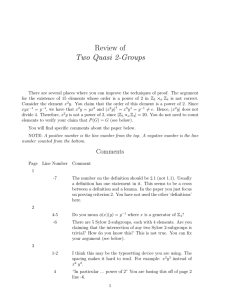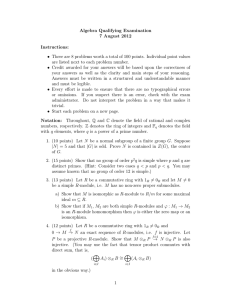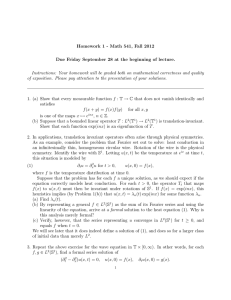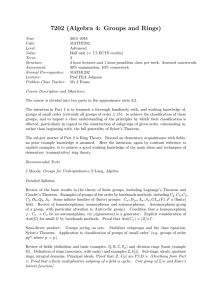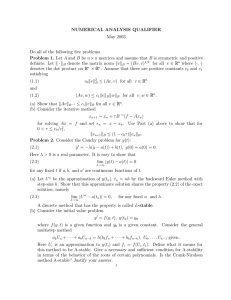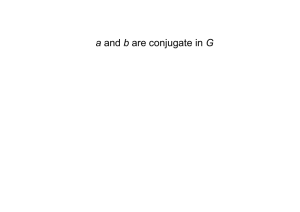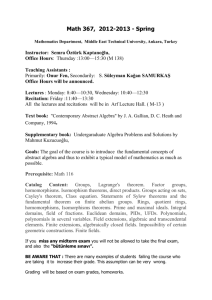Algebra Qualifying Examination 12 January 2010 : Instructions
advertisement
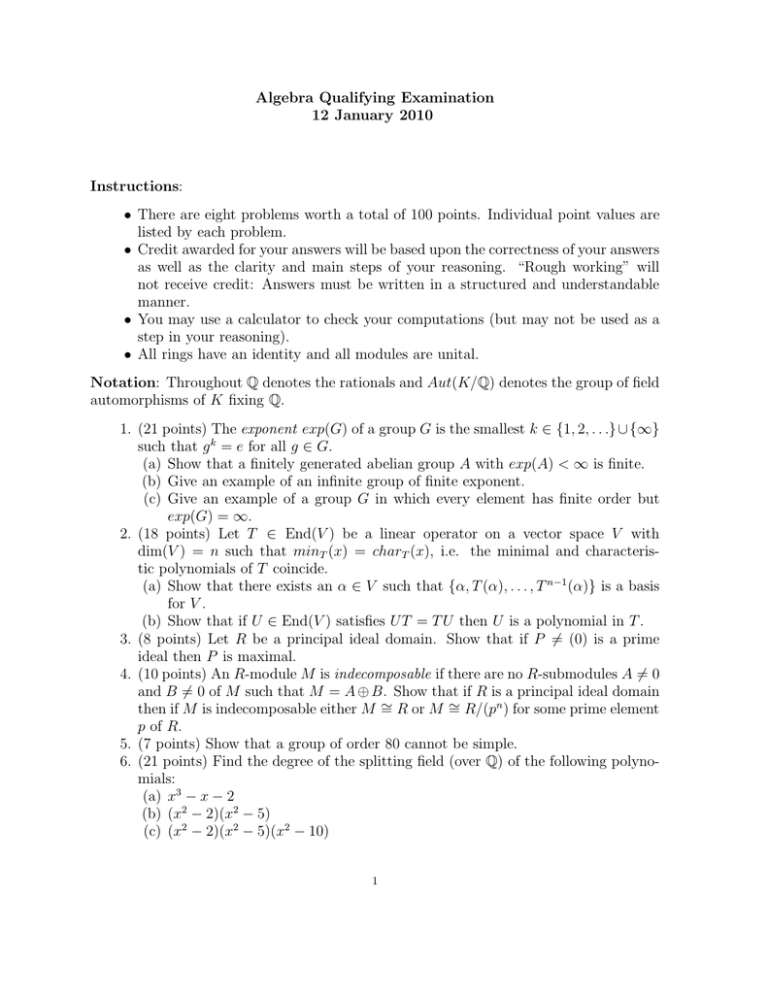
Algebra Qualifying Examination
12 January 2010
Instructions:
• There are eight problems worth a total of 100 points. Individual point values are
listed by each problem.
• Credit awarded for your answers will be based upon the correctness of your answers
as well as the clarity and main steps of your reasoning. “Rough working” will
not receive credit: Answers must be written in a structured and understandable
manner.
• You may use a calculator to check your computations (but may not be used as a
step in your reasoning).
• All rings have an identity and all modules are unital.
Notation: Throughout Q denotes the rationals and Aut(K/Q) denotes the group of field
automorphisms of K fixing Q.
1. (21 points) The exponent exp(G) of a group G is the smallest k ∈ {1, 2, . . .} ∪ {∞}
such that g k = e for all g ∈ G.
(a) Show that a finitely generated abelian group A with exp(A) < ∞ is finite.
(b) Give an example of an infinite group of finite exponent.
(c) Give an example of a group G in which every element has finite order but
exp(G) = ∞.
2. (18 points) Let T ∈ End(V ) be a linear operator on a vector space V with
dim(V ) = n such that minT (x) = charT (x), i.e. the minimal and characteristic polynomials of T coincide.
(a) Show that there exists an α ∈ V such that {α, T (α), . . . , T n−1 (α)} is a basis
for V .
(b) Show that if U ∈ End(V ) satisfies UT = T U then U is a polynomial in T .
3. (8 points) Let R be a principal ideal domain. Show that if P 6= (0) is a prime
ideal then P is maximal.
4. (10 points) An R-module M is indecomposable if there are no R-submodules A 6= 0
and B 6= 0 of M such that M = A ⊕ B. Show that if R is a principal ideal domain
then if M is indecomposable either M ∼
= R or M ∼
= R/(pn ) for some prime element
p of R.
5. (7 points) Show that a group of order 80 cannot be simple.
6. (21 points) Find the degree of the splitting field (over Q) of the following polynomials:
(a) x3 − x − 2
(b) (x2 − 2)(x2 − 5)
(c) (x2 − 2)(x2 − 5)(x2 − 10)
1
7. (7 points) Let G be a finite group and H a Sylow p-subgroup of G. Show that
NG (NG (H)) = NG (H) where
NG (K) := {g ∈ G : gKg −1 = K}.
(You may use the Sylow theorems, but you may not state a theorem from a text
that is identical to the content of the problem).
8. (8 points) Determine the Galois group of x5 − 6x + 3 over Q (justify your answer).
2
